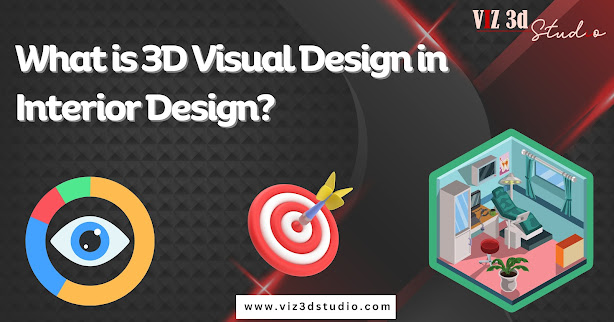Unveiling the Depth: Exploring 3D Visual Design in Interior Design.
Unveiling the Depth: Exploring 3D Visual Design in Interior Design
In the realm of interior design, the fusion of artistry and
functionality creates spaces that transcend mere utility, transforming them
into captivating environments that evoke emotion and inspiration. Among the
myriad tools at the disposal of modern interior designers, 3D visual design
stands out as a powerful medium, revolutionizing the way spaces are
conceptualized, communicated, and ultimately brought to life.
So, what exactly is 3D visual design in interior design?
At its core, 3D visual design refers to the process of
creating three-dimensional representations of interior spaces using specialized
software. These digital renderings offer a lifelike depiction of how a space
will look once completed, allowing designers and clients alike to visualize the
end result with remarkable clarity and detail.
One of the primary advantages of 3D visual design lies in
its ability to bridge the gap between imagination and reality. Unlike
traditional two-dimensional sketches or blueprints, which often struggle to
convey the true essence of a design concept, 3D renderings offer a more
immersive and tangible experience. By incorporating realistic textures,
lighting effects, and spatial proportions, these visualizations provide a
glimpse into the future, enabling stakeholders to make informed decisions and
adjustments before any physical work begins.
Moreover, 3D visual design facilitates effective
communication among project collaborators. Whether it's architects, interior
designers, contractors, or clients, everyone involved can gain a comprehensive
understanding of the design intent and make valuable contributions to the
process. This collaborative approach fosters synergy and ensures that the final
outcome reflects the collective vision and expertise of all parties involved.
Furthermore, 3D visual design enhances the creative
possibilities within interior design. Freed from the constraints of traditional
methods, designers can experiment with different layouts, color schemes, and
decorative elements with ease. By manipulating virtual objects within the
digital environment, they can refine every aspect of the design until it aligns
perfectly with the desired aesthetic and functional objectives.
Additionally, 3D visualizations serve as invaluable
marketing tools in the interior design industry. Whether presenting concepts to
potential clients or showcasing completed projects to the public,
photorealistic renderings captivate attention and generate excitement. These
visual representations not only convey the designer's skills and vision but
also instill confidence in prospective clients, helping to secure new
commissions and elevate the designer's reputation within the industry.
In essence, 3D visual design is more than just a
technological innovation; it's a transformative force that empowers designers
to realize their creative visions with unparalleled precision and impact. By
harnessing the power of advanced software tools, interior designers can
transcend the limitations of traditional design methods and unlock new realms
of possibility. From conceptualization to execution, 3D visual design
revolutionizes every stage of the interior design process, reshaping the way we
envision and experience the spaces we inhabit.
In conclusion, 3D visual design represents a paradigm shift
in the field of interior design, offering a compelling blend of artistic
expression, technical precision, and collaborative synergy. As technology
continues to evolve, so too will the possibilities within the realm of 3D
visual design, inspiring designers to push the boundaries of creativity and
innovation in pursuit of truly extraordinary spaces.
.jpg)
.jpg)
.jpg)

Comments
Post a Comment